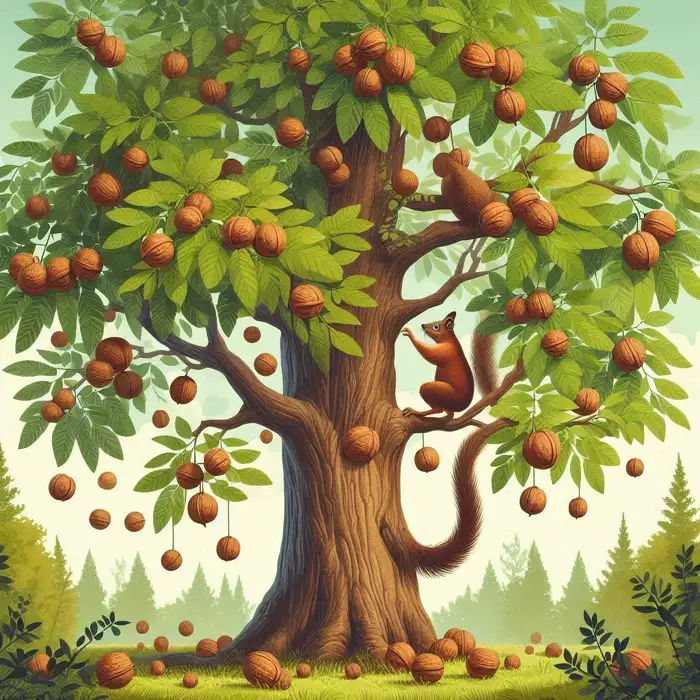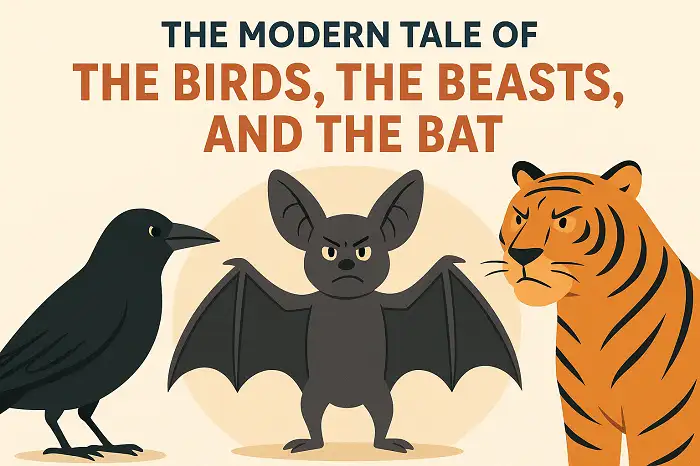The Walnut Tree by Aesop for English students with a video, vocabulary practice in real context, and questions for discussion The Walnut Tree is now in the public domain available on Gutenberg Project. Video of the Walnut Tree https://www.youtube.com/watch?v=riskujDx5HA The Walnut Tree by Aesop A walnut tree, which grew by the roadside, bore every year a plentiful crop of nuts. Every one who passed by pelted its branches with sticks and stones, in order to bring down the fruit, and the tree suffered severely. "It is hard," it cried, "that the very persons who enjoy my fruit should thus reward ...
Home » English Short Stories » The Walnut Tree by Aesop for English Students

The Walnut Tree by Aesop for English Students
Updated: by Dr. Mohammad Hossein Hariri Asl
Time to Read: 3 minutes | 354 Views | 8 Comments on The Walnut Tree by Aesop for English Students
Share This Post
About the Author
Dr. Mohammad Hossein Hariri Asl is an English and Persian instructor, educator, researcher, inventor, published author, blogger, SEO expert, website developer, entrepreneur, and the creator of LELB Society. He's got a PhD in TEFL (Teaching English as a Foreign Language).
Number of Posts: 4235



1) The walnut tree is upset with the travelers in the fable, because he gave them a lot of what they was needed but they didn’t say thank you. They only insults and blows the tree.
2)The fable trying to teach us that you should always be happy, also if their isn’t a big deal.
3) The travelers shouldn’t be so greedy.
Their is always a way which harm no one. For example, surely they was also food from the tree on the floor.
– Robina
You’re absolutely right.
Feedback
The walnut tree is upset = The walnut tree was upset (use the simple past tense)
their isn’t a big deal = there isn’t a big deal
Their is always a way = There is always a way
they was also food = there was also food
„You reap what you sow.“
-as the people hit the tree to became snacks then maybe are the snacks are immature and then they became they sow what they reap
Your comment is an interpretation of the stated proverb. The villagers and strangers were too hasty, greedy and impatient. So, they overconsumed the entire fruits of the walnut tree, thereby destroying the poor tree. As a result, they had to deal with the dire consequence of their irrational action, which was equal to no more fruits or shade from the tree.
1. The walnut was upset with the travelers because of destroying it just to get nuts. So, the walnut tree harmed severely.
2. This story warns us to be responsive to our actions. As you read, the travelers were impervious and impenetrable in their behavior to get the fruits.
3. Yes, the travelers can wait for nuts to come down naturally, rather than harming the walnut tree and resorting to force.
Thanks for your comment on the walnut tree story.
Feedback
1. The walnut was upset = The walnut tree was upset
2. the walnut tree was harmed severely
1. The walnut tree is upset because passing travelers threw and pelted stones at the tree in order to catch the fruits.
2. From the fable, I come to the conclusion that we should be responsible and protect the valuable sources of nature, avoiding hurting and destroying them for our own quick pleasures.
3. They could have picked the fruits without throwing stones, or they could have bought the fruits from the locals.
As you wisely stated, the walnut tree fable by Aesop teaches us the moral of expressing our genuine gratitude and appreciation of the blessings we already have. Likewise, the story despised any destructive behavior toward nature and generally any act of ingratitude.